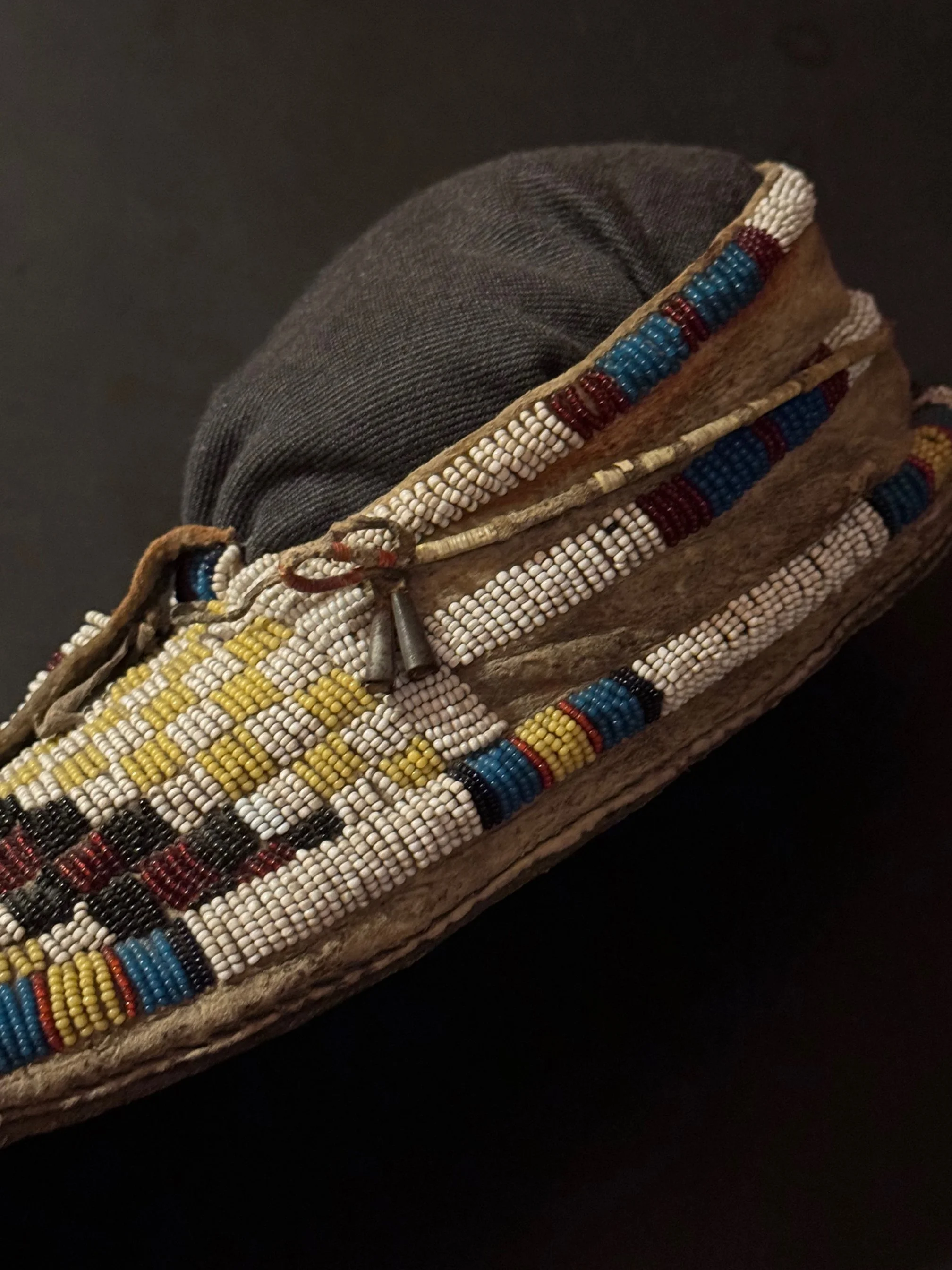



Your Custom Text Here
This pair of moccasins which has rawhide soles which utilize a double-welt construction. The uppers have lanes of beadwork which counter around the quarters and meet at the heel seam, where there is remnants of heel fringe. The lanes are sewn with early colors of seed beads, including pony trader blue and crimson. The vamps, meanwhile, employ a checkboard patter with greasy yellow and white. Through the vamps there is a chevron design.
9.5” long (each)
#51142
This pair of moccasins which has rawhide soles which utilize a double-welt construction. The uppers have lanes of beadwork which counter around the quarters and meet at the heel seam, where there is remnants of heel fringe. The lanes are sewn with early colors of seed beads, including pony trader blue and crimson. The vamps, meanwhile, employ a checkboard patter with greasy yellow and white. Through the vamps there is a chevron design.
9.5” long (each)
#51142